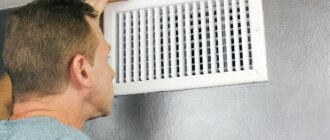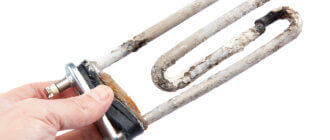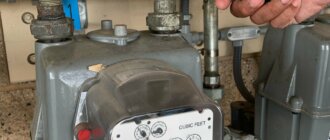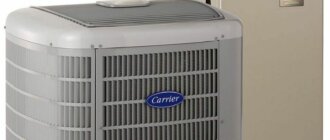Ductless Mini Split System Installation & Repair
Introduction
Are you tired of dealing with bulky and inefficient ductwork in your home or office? Ductless mini split systems may just be the solution you’ve been looking for! These compact and versatile HVAC units can provide both heating and cooling, all without the need for extensive ductwork. But how do they work, what are their advantages, and how can you ensure a proper installation? In this blog post, we’ll explore everything you need to know about ductless mini split system installation and repair. So sit back, relax, and let’s dive in!
Understanding Ductless Mini Split Systems
Ductless mini split systems, also known as ductless heat pumps, are a type of heating and cooling system that offer an alternative to traditional HVAC systems. These systems consist of two main components: an outdoor unit and one or more indoor units.
The outdoor unit contains the compressor and the condenser coil, while the indoor unit houses the evaporator coil and a blower fan. The two units are connected by refrigerant lines that carry cold or hot air between them.
One key advantage of ductless mini split systems is their flexibility in installation. They can be installed virtually anywhere in your home without requiring costly modifications to existing structures.
Another benefit is their ability to provide zoned heating and cooling. With multiple indoor units, you can set different temperatures for different rooms or zones in your home, which can lead to significant energy savings.
Understanding how these systems work is crucial when deciding whether they’re right for your home’s heating and cooling needs.
Components and Function
A ductless mini split system has three main components: an outdoor unit, an indoor unit, and a conduit that connects them. The outdoor unit houses the compressor, while the indoor unit contains the evaporator.
The conduit consists of a power cable, refrigerant tubing, and a drain line. It links the indoor and outdoor units together to facilitate communication between them.
When you turn on your ductless mini split system, warm air from inside your home is drawn into the indoor unit through vents in its casing. This air is then filtered before being cooled by passing over the evaporator coils where it absorbs heat energy from it.
After being cooled, this newly conditioned air is pushed back out into your room via grilles or vents located on the front panel of your indoor unit. At this stage of operation, excess moisture accumulated by condensation during the cooling process will also be drained away outside.
This cycle continues until your desired temperature is reached in each zone/room set up with separate indoor units connected to one outdoor compressor through conduits.
Advantages of Ductless Mini Split Systems
Ductless mini split systems offer several advantages over traditional HVAC systems. Firstly, they do not require ductwork and can be installed easily in any room or space. This means that installation costs are lower, and the system is more efficient since there is no energy loss through ducts.
Another advantage of ductless mini split systems is their flexibility. They have zoning options which allow you to control the temperature in each room individually, making them perfect for large homes or buildings with multiple rooms.
These systems also provide better indoor air quality as they come equipped with advanced filtration technology that removes allergens and other harmful particles from the air.
In addition, ductless mini split systems are highly energy-efficient compared to traditional HVAC units. They use less power because they don’t need to pump cool or warm air through ducts, which results in significant savings on your utility bills.
These units operate quietly and produce very little noise pollution compared to window-mounted AC units or portable heaters. This makes them ideal for bedrooms, living rooms, or even office spaces where silence is necessary.
Ductless Mini Split Systems present a practical solution for heating & cooling needs while offering many benefits including cost efficiency due to low maintenance requirements and reduced energy consumption levels among others.
Selecting the Right Ductless Mini Split System
When it comes to selecting the right ductless mini split system for your home or office, there are a few key factors to consider. First and foremost, you’ll want to determine the size and capacity needed for your space. This will depend on factors such as room size, ceiling height, insulation levels, and climate zone.
Another important consideration is energy efficiency. Look for a model with a high SEER rating (Seasonal Energy Efficiency Ratio) to ensure maximum efficiency and cost savings over time.
Zoning options can also be an important factor in selecting the right ductless mini split system. Some models offer individual temperature controls for each unit or room, allowing you to customize comfort levels according to specific needs and preferences.
It’s also important to select a reputable brand and choose a trusted installer who can properly assess your needs and recommend the best options based on your unique situation.
Taking these factors into account when selecting a ductless mini split system can help ensure optimal performance, energy savings, and long-term satisfaction with your investment.
Sizing and Capacity
When it comes to selecting a ductless mini split system, sizing and capacity are crucial factors that need to be considered. A unit that is too small may not adequately cool or heat your space, while one that is too large can result in energy wastage.
To determine the appropriate size of your ductless mini split system, several factors should be taken into account. These include the square footage of your room or home, window orientation and insulation levels. Additionally, factors such as ceiling height and local climate also play a role in determining the right size for your unit.
Capacity refers to how much heating or cooling power a unit produces measured in British Thermal Units (BTUs). The higher the BTU rating of a unit, the more powerful it is. However, an excessively high BTU rating can lead to inefficient operation and unnecessary energy consumption.
Consulting with an HVAC professional can help you choose the correct size and capacity for your specific needs. It’s important to ensure proper installation for optimal performance and efficiency from your ductless mini split system.
Energy Efficiency
Energy efficiency is one of the main advantages of ductless mini split systems. These systems use less energy than traditional HVAC units, which can result in lower utility bills and a reduced carbon footprint.
One reason for their energy efficiency is that ductless mini split systems don’t experience the same amount of energy loss as traditional HVAC units because there are no air ducts to transport conditioned air through. This means that homeowners can save more money on their heating and cooling costs by eliminating this source of waste.
Another way ductless mini split systems conserve energy is through their zoning capabilities. These allow users to tailor temperature settings to specific areas or rooms, so they’re not wasting energy conditioning empty spaces. Additionally, some models come equipped with programmable thermostats which enable homeowners to schedule when they want their system to turn on or off, further reducing unnecessary usage.
Investing in a new ductless mini split system or upgrading an old unit will not only provide improved comfort levels but also benefit your wallet and our environment’s health by being more efficient with your home’s heating and cooling needs.
Zoning Options
When it comes to ductless mini split systems, one of the biggest advantages is the ability to have zoning options. This means that you can control the temperature in individual rooms or zones rather than having a uniform temperature throughout your home.
Zoning options are great for larger homes with multiple rooms and levels because they allow you to only heat or cool the areas that you’re using. For example, if you spend most of your time in your living room during the day, but don’t use your upstairs bedrooms until nighttime, then you can turn off the heating or cooling in those areas during the day to save energy and money.
Another benefit of zoning options is that they prevent arguments over temperature settings between family members. If someone prefers a cooler bedroom at night while others prefer a warmer temperature, everyone can be happy by adjusting their own zone accordingly.
Zoning options offer flexibility and convenience when it comes to controlling indoor temperatures. It’s definitely worth considering when choosing a ductless mini split system for your home.
Ductless Mini Split System Installation
If you’ve decided to go with a ductless mini split system for your heating and cooling needs, then the next step is installation. While it’s possible to install these systems on your own, it’s recommended that you hire a professional HVAC contractor.
During the installation process, the indoor and outdoor units will be mounted in their respective locations. Tubing and electrical wiring will need to be run between the two units as well. This process requires knowledge of electrical wiring and refrigerant handling.
One important consideration during installation is sizing and capacity. The right size unit should be chosen based on factors such as room size, insulation levels, ceiling height, number of windows, and more.
Energy efficiency is also key during installation. Your contractor should pay attention to proper placement of the indoor unit(s) for optimal airflow, which can help maximize energy savings.
Choosing an experienced HVAC contractor who specializes in ductless mini split systems can ensure proper installation so that your system runs efficiently for years to come.
Common Ductless Mini Split System Issues
Despite their many benefits, ductless mini split systems can still experience common issues that may require repairs. One of the most frequent problems is a refrigerant leak, which can cause reduced cooling or heating performance and higher energy bills.
Another issue to look out for is dirty filters, which can lead to decreased airflow and poor indoor air quality. It’s important to clean or replace filters regularly to avoid this problem.
Sometimes, ductless mini split systems may produce strange noises such as hissing sounds, rattling noises, or banging sounds. These could be due to loose parts inside the unit or a malfunctioning compressor.
If your system fails to turn on completely or frequently shuts off by itself, it could indicate an electrical issue like faulty wiring or a tripped circuit breaker. This should never be ignored as it poses safety risks.
Additionally, if you notice water leaking from your indoor unit or ice buildup on the outdoor unit during winter months, then it could signify various problems including clogged drain lines and low refrigerant levels respectively.
In any case where you’re unsure about what’s wrong with your ductless mini split system, don’t hesitate to call a professional technician who has hands-on experience with these types of HVAC systems.
DIY Maintenance and Troubleshooting
Regular maintenance can help extend the life of your ductless mini split system and prevent unexpected breakdowns. Here are some DIY maintenance tips you can do to keep your unit running efficiently.
Firstly, regularly clean or replace the air filters to ensure proper airflow and improve indoor air quality. Secondly, check the outdoor unit for any debris or obstructions as this could affect its performance. Thirdly, inspect all electrical connections for loose wires or signs of damage.
If you notice any issues with your ductless mini split system such as strange noises, poor cooling/heating performance, or leaks, troubleshooting may be necessary. Check the thermostat batteries and settings first before moving on to inspecting other components such as the refrigerant levels or drainage system.
However, it’s important to note that certain repairs should only be done by a professional contractor who has experience working with ductless mini split systems. Attempting complex repairs without proper knowledge and equipment can cause further damage to your unit.
By following these simple DIY maintenance tasks and basic troubleshooting steps, you’ll be able to keep your ductless mini split system in good condition while saving money on repair costs down the line!
When to Call a Professional
When it comes to ductless mini split system repair, there are some issues that require the expertise of a professional HVAC technician. Attempting to fix these problems yourself can cause further damage or even pose a safety risk.
One scenario when you should call a professional is if your system is making strange noises. A trained technician will be able to identify the source of the noise and determine whether any components need to be repaired or replaced.
Another situation where calling in an expert is necessary is if your system has stopped working altogether. This could be due to a malfunctioning compressor, electrical issue, or refrigerant leak – all of which require specialized knowledge and equipment to fix safely.
If you notice any unusual smells coming from your ductless mini split system, such as burning plastic or rotten eggs, turn off the unit immediately and call for professional help. These odors could indicate serious problems with your wiring or gas lines that require immediate attention.
Ultimately, while DIY maintenance and troubleshooting can save you time and money in certain situations, it’s important not to attempt repairs beyond your skill level. Knowing when to call in a pro ensures your ductless mini split system stays safe and functional for years to come.
Choosing the Right Ductless Mini Split System Repair Contractor
Choosing the right ductless mini split system repair contractor is crucial for ensuring that your system is repaired properly and efficiently. It can be overwhelming to choose from a long list of contractors, but taking the time to do some research beforehand can save you money in the long run.
Firstly, look for licensed and insured contractors. This ensures that they have met certain standards and requirements set by the state, which guarantees their expertise. Reading reviews online or asking for referrals from friends and family members who have had similar repairs done can also help narrow down your options.
Another factor to consider is the contractor’s experience with ductless mini split systems specifically. A contractor who has handled multiple repairs on these systems will likely be more efficient in identifying issues and finding solutions quickly.
Furthermore, it’s important to check if they offer emergency services as well as regular maintenance plans. Having access to 24/7 service during emergencies can give you peace of mind knowing that your system will always be taken care of when needed.
Get estimates from different contractors before making a decision. Compare pricing along with other factors such as warranties offered, response times, and overall professionalism before choosing one that suits your needs best.
Conclusion
Ductless mini split systems offer a wide range of benefits that traditional HVAC systems cannot match.
They are energy-efficient, easy to install and maintain, and provide zoning options that allow you to control temperatures in specific areas of your home. However, proper sizing and selecting the right system are crucial for optimal performance.
When it comes to installation and repair, always consult with a professional contractor who has experience working with ductless mini split systems. This will ensure that your system is installed correctly and any issues are addressed promptly.
Ductless mini split systems can be an excellent addition to your home comfort needs. With their efficiency, flexibility, and ease of use, they’re definitely worth considering when looking for ways to stay comfortable year-round while reducing energy bills at the same time!
Recent Queries:




